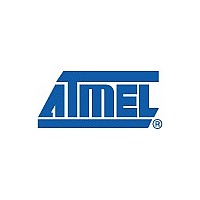ATTINY20-EK1 Atmel, ATTINY20-EK1 Datasheet - Page 141

ATTINY20-EK1
Manufacturer Part Number
ATTINY20-EK1
Description
KIT EVAL TOUCH ATTINY20
Manufacturer
Atmel
Datasheet
1.ATTINY20-EK1.pdf
(224 pages)
Specifications of ATTINY20-EK1
Sensor Type
*
Sensing Range
*
Interface
*
Sensitivity
*
Voltage - Supply
*
Embedded
*
Utilized Ic / Part
*
Silicon Manufacturer
Atmel
Core Architecture
AVR
Core Sub-architecture
TinyAVR
Kit Contents
Board
Svhc
No SVHC (15-Dec-2010)
Mcu Supported Families
ATtiny20
Tool / Board Applications
Microcontroller
Rohs Compliant
Yes
Tool Type
Development Kit
Cpu Core
AVR 8
Data Bus Width
8 bit
Processor To Be Evaluated
ATtiny20
Interface Type
Touch
Lead Free Status / RoHS Status
Lead free / RoHS Compliant
- Current page: 141 of 224
- Download datasheet (6Mb)
17.3.4
17.3.5
17.3.6
8235B–AVR–04/11
Address Packet
Data Packet
Transaction
After the START condition, a 7-bit address followed by a read/write (R/W) bit is sent. This is
always transmitted by the Master. A slave recognizing its address will ACK the address by pull-
ing the data line low the next SCL cycle, while all other slaves should keep the TWI lines
released, and wait for the next START and address. The 7-bit address, the R/W bit and the
acknowledge bit combined is the address packet. Only one address packet for each START
condition is given, also when 10-bit addressing is used.
The R/W specifies the direction of the transaction. If the R/W bit is low, it indicates a Master
Write transaction, and the master will transmit its data after the slave has acknowledged its
address. Opposite, for a Master Read operation the slave will start to transmit data after
acknowledging its address.
Data packets succeed an address packet or another data packet. All data packets are nine bits
long, consisting of one data byte and an acknowledge bit. The direction bit in the previous
address packet determines the direction in which the data is transferred.
A transaction is the complete transfer from a START to a STOP condition, including any
Repeated START conditions in between. The TWI standard defines three fundamental transac-
tion modes: Master Write, Master Read, and combined transaction.
Figure 17-5
ing a START condition (S) followed by an address packet with direction bit set to zero
(ADDRESS+W).
Figure 17-5. Master Write Transaction
Given that the slave acknowledges the address, the master can start transmitting data (DATA)
and the slave will ACK or NACK (A/A) each byte. If no data packets are to be transmitted, the
master terminates the transaction by issuing a STOP condition (P) directly after the address
packet. There are no limitations to the number of data packets that can be transferred. If the
slave signal a NACK to the data, the master must assume that the slave cannot receive any
more data and terminate the transaction.
Figure 17-6
ing a START condition followed by an address packet with direction bit set to one (ADRESS+R).
The addressed slave must acknowledge the address for the master to be allowed to continue
the transaction.
illustrates the Master Write transaction. The master initiates the transaction by issu-
illustrates the Master Read transaction. The master initiates the transaction by issu-
ATtiny20
141
Related parts for ATTINY20-EK1
Image
Part Number
Description
Manufacturer
Datasheet
Request
R

Part Number:
Description:
Manufacturer:
Atmel Corporation
Datasheet:

Part Number:
Description:
MCU AVR 2KB FLASH 12MHZ 14SOIC
Manufacturer:
Atmel
Datasheet:

Part Number:
Description:
MCU AVR 2KB FLASH 12MHZ 14TSSOP
Manufacturer:
Atmel
Datasheet:

Part Number:
Description:
MCU AVR 2KB FLASH 12MHZ 14TSSOP
Manufacturer:
Atmel
Datasheet:

Part Number:
Description:
MCU AVR 2KB FLASH 12MHZ 20QFN
Manufacturer:
Atmel
Datasheet:

Part Number:
Description:
MCU AVR 2KB FLASH 12MHZ 20QFN
Manufacturer:
Atmel
Datasheet:

Part Number:
Description:
MCU AVR 2KB FLASH 12MHZ 15UFBGA
Manufacturer:
Atmel
Datasheet:

Part Number:
Description:
MCU AVR 2KB FLASH 12MHZ 15UFBGA
Manufacturer:
Atmel
Datasheet:

Part Number:
Description:
IC MCU AVR 2K FLASH 14SOIC
Manufacturer:
Atmel
Datasheet:

Part Number:
Description:
DEV KIT FOR AVR/AVR32
Manufacturer:
Atmel
Datasheet:

Part Number:
Description:
INTERVAL AND WIPE/WASH WIPER CONTROL IC WITH DELAY
Manufacturer:
ATMEL Corporation
Datasheet:

Part Number:
Description:
Low-Voltage Voice-Switched IC for Hands-Free Operation
Manufacturer:
ATMEL Corporation
Datasheet:

Part Number:
Description:
MONOLITHIC INTEGRATED FEATUREPHONE CIRCUIT
Manufacturer:
ATMEL Corporation
Datasheet:

Part Number:
Description:
AM-FM Receiver IC U4255BM-M
Manufacturer:
ATMEL Corporation
Datasheet:










